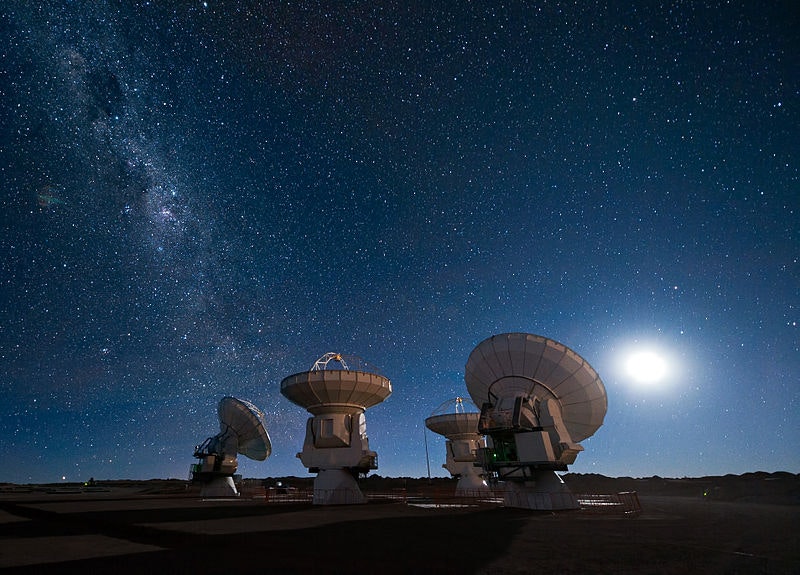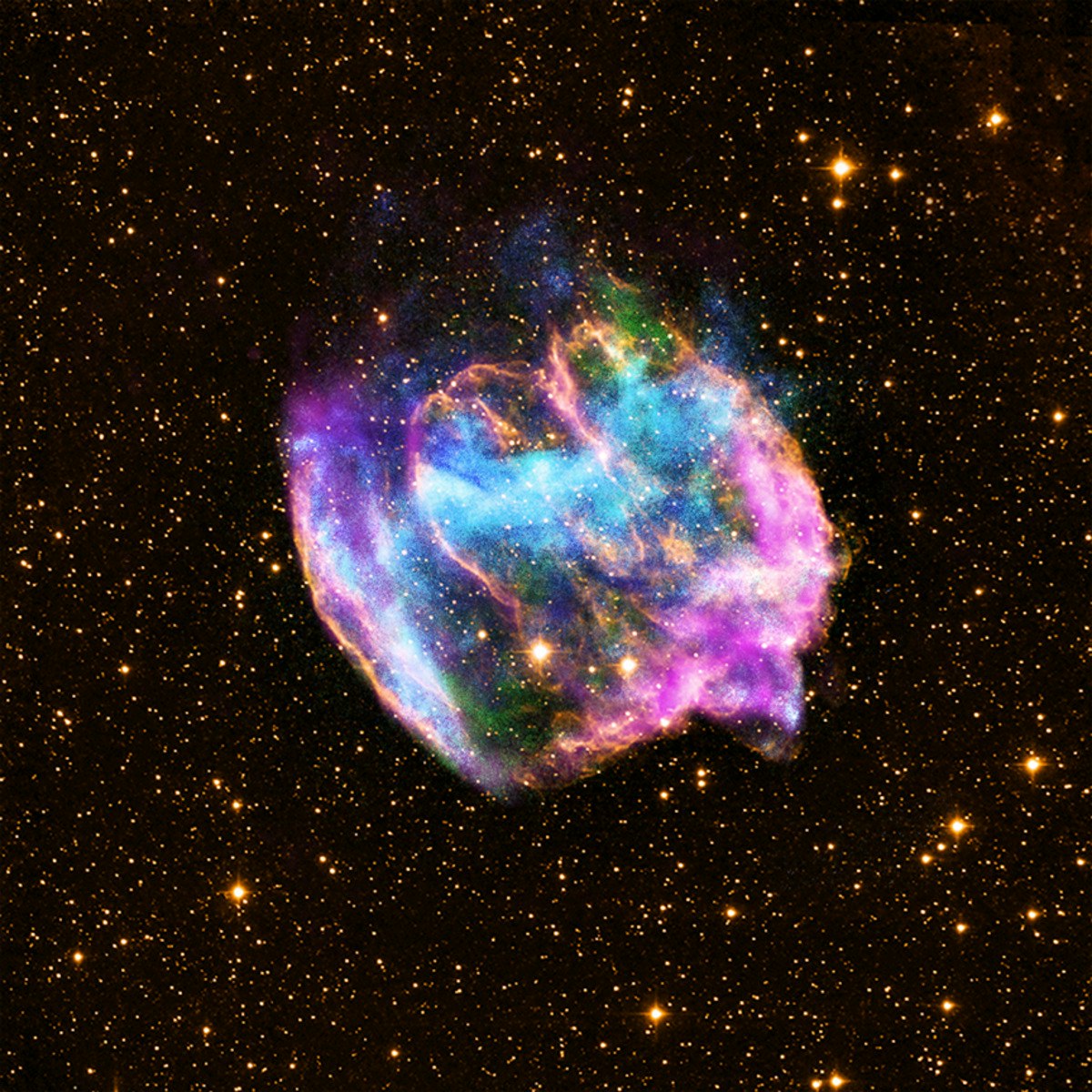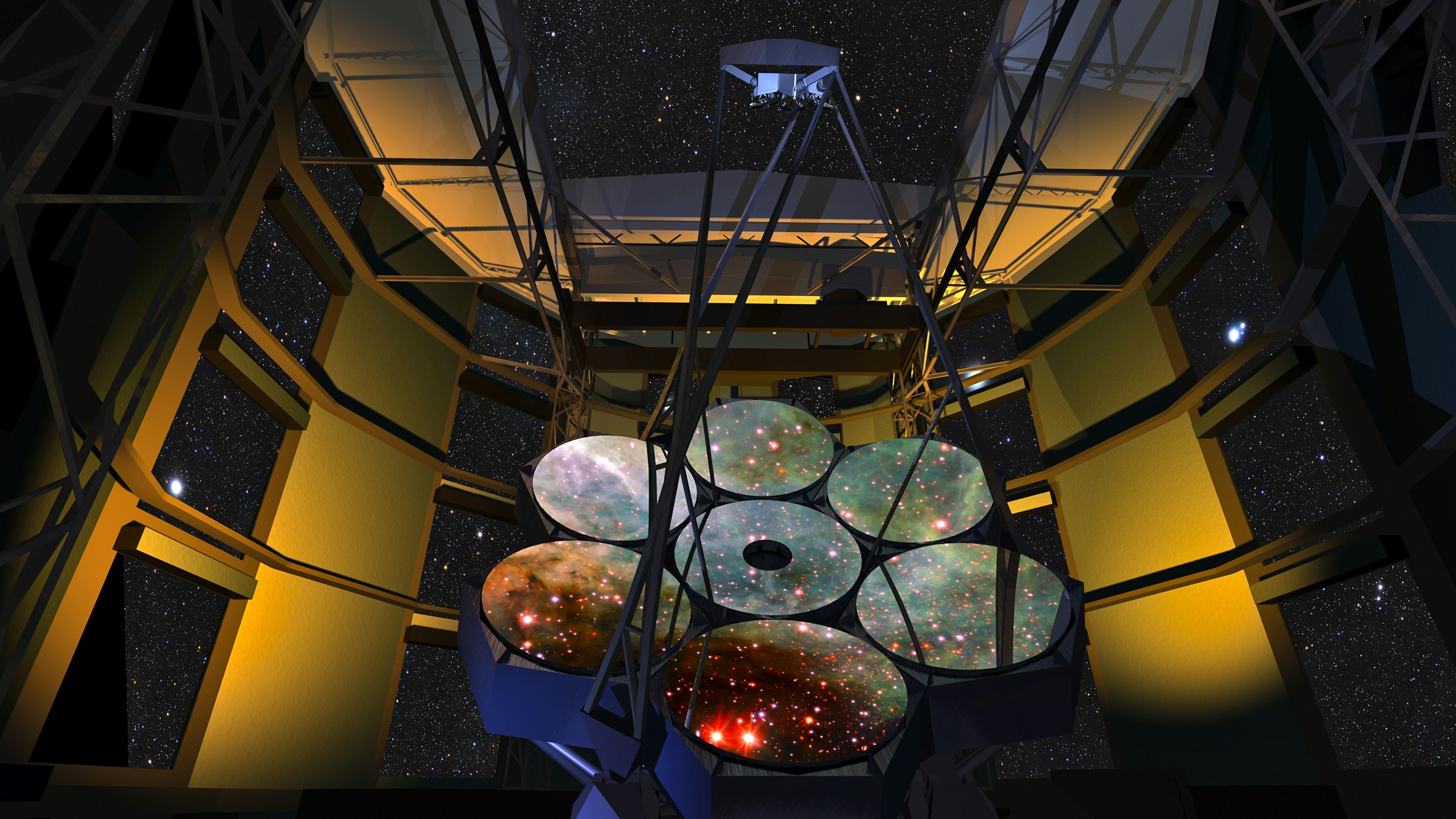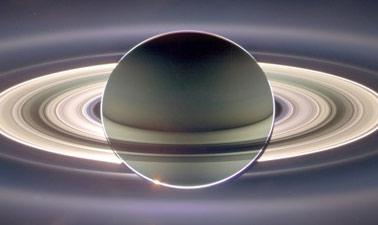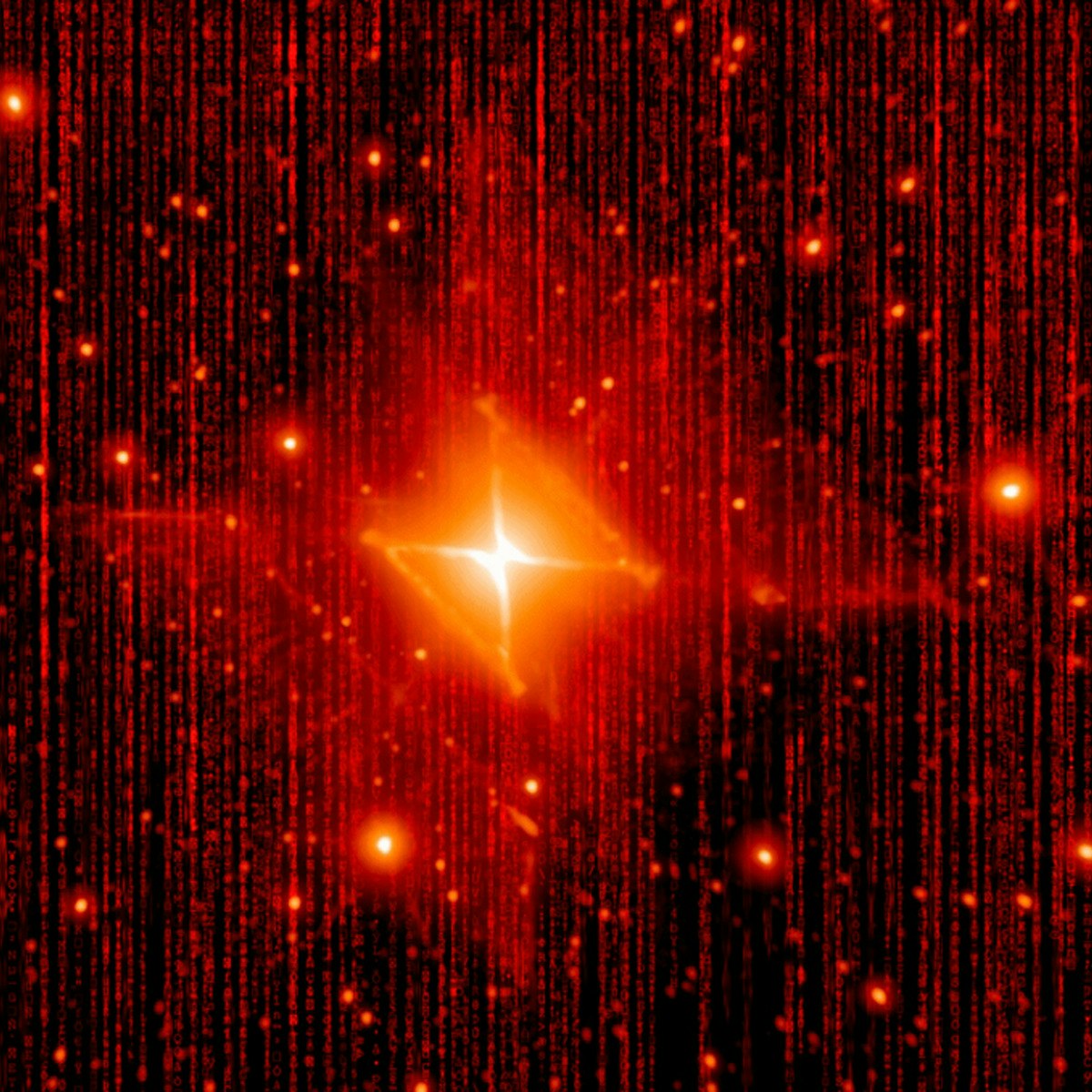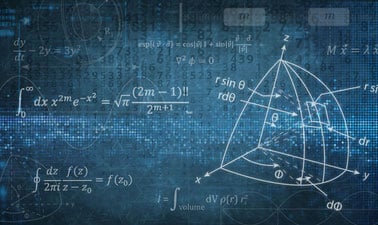Astronomer
A Career as an Astronomer: Exploring the Cosmos
Astronomy is the scientific study of everything outside of Earth's atmosphere. This includes planets, stars, galaxies, black holes, and the very fabric of the universe itself. Astronomers use the principles of physics and mathematics to observe, interpret, and understand celestial objects and phenomena, seeking answers to some of humanity's oldest and most profound questions about our place in the cosmos.
Working as an astronomer offers the thrill of discovery, pushing the boundaries of human knowledge. You might be involved in analyzing data from powerful telescopes like the Hubble or James Webb Space Telescopes, developing complex computer models to simulate cosmic events, or even designing the next generation of astronomical instruments. It's a field driven by curiosity and a desire to comprehend the universe on its grandest scales.
Introduction to Astronomer
Defining the Discipline: What is Astronomy?
Astronomy is a natural science focused on celestial objects and the physical universe. It encompasses the study of planets within and beyond our solar system (exoplanets), the life cycles of stars, the structure and evolution of galaxies, and the origin and fate of the universe (cosmology). Astronomers seek to understand the physical laws governing these entities and events.
The field uses observation, theoretical modeling, and data analysis to build a coherent picture of the cosmos. It is inherently interdisciplinary, drawing heavily on physics, mathematics, chemistry, geology (for planetary science), and computer science. Modern astronomy relies significantly on technology for observation and data processing.
It's important to distinguish between professional astronomers, who conduct research typically requiring advanced degrees, and amateur astronomers. Amateurs pursue astronomy as a hobby, often making valuable contributions through observations and citizen science projects, but professional astronomy is a rigorous scientific career path.
Key Responsibilities: The Day-to-Day Work
The specific duties of an astronomer vary widely depending on their specialization (observational vs. theoretical) and work environment (academia, government, etc.). However, common responsibilities often include planning and conducting research projects to test theories or discover new phenomena. This might involve applying for time on telescopes or developing computational models.
A significant portion of an astronomer's time involves data analysis. This means processing vast amounts of data collected from telescopes (both ground-based and space-based) using sophisticated software and statistical techniques. Astronomers interpret these findings, often collaborating with colleagues internationally.
Communicating research results is crucial. This involves writing scientific papers for publication in peer-reviewed journals, presenting findings at conferences, and writing proposals to secure grant funding for future research. Many astronomers, particularly those in university settings, also have teaching and mentoring responsibilities for undergraduate and graduate students.
Professional vs. Amateur Astronomy
Professional astronomers are typically scientists with PhDs who are employed by universities, research institutes, government agencies (like NASA), or related industries. Their primary focus is on conducting original research, publishing findings, and often teaching or developing instrumentation. Their work is subject to peer review and contributes directly to the advancement of scientific knowledge.
Amateur astronomers, on the other hand, pursue astronomy out of personal interest and passion. While they may possess deep knowledge and sophisticated equipment, their work is usually not their primary profession. They often engage in activities like astrophotography, observing celestial events, and participating in citizen science projects, sometimes making significant discoveries or contributions.
While the paths differ, both professional and amateur astronomers share a fascination with the cosmos. Many professionals began as enthusiastic amateurs. Engaging with local astronomy clubs or online communities can be a great way for anyone interested in the field to learn more and connect with others who share their passion.
These introductory courses offer a broad overview of astronomy, suitable for those exploring the field.
Becoming an Astronomer: Formal Education Pathways
The journey to becoming a professional astronomer is academically rigorous, typically requiring extensive education beyond a bachelor's degree. It demands a strong aptitude for quantitative reasoning and a deep curiosity about the universe.
Undergraduate Foundations
The first step is completing a bachelor's degree, usually in physics, astrophysics, or astronomy. A strong foundation in core physics concepts (kinematics, electromagnetism, thermodynamics, quantum mechanics) is essential. Equally important is a robust mathematical background, including multiple levels of calculus, linear algebra, differential equations, and statistics.
Computer science skills are also increasingly critical. Proficiency in programming languages like Python is standard, used for data analysis, simulations, and controlling instrumentation. Undergraduate research experience, often gained through summer internships or projects with faculty, significantly strengthens applications for graduate programs.
While a dedicated astronomy or astrophysics major is ideal, a strong physics degree supplemented with relevant astronomy coursework and research can also provide a suitable pathway. Maintaining a high GPA and securing strong letters of recommendation are vital for progressing to the next stage.
These courses cover fundamental physics and mathematics relevant to aspiring astronomers.
Graduate Studies: The Path to a PhD
For most research and academic positions in astronomy, a Doctor of Philosophy (PhD) is required. Admission into PhD programs is highly competitive and typically requires a strong undergraduate record in physics or astronomy, research experience, and excellent letters of recommendation. Graduate programs involve advanced coursework covering various areas of astrophysics, such as stellar evolution, cosmology, galactic dynamics, and planetary science.
A significant component of a PhD program is original research conducted under the guidance of a faculty advisor. This culminates in a dissertation – a substantial body of original work contributing new knowledge to the field. During their PhD, students develop deep expertise in a specific subfield, hone their research methodologies, learn to analyze complex datasets, and refine their scientific writing and presentation skills.
Graduate school is not just about learning; it's an apprenticeship in becoming an independent researcher. Students often present their work at conferences, collaborate on projects, and may gain teaching experience as teaching assistants. The typical duration for a PhD in astronomy in the US is 5-7 years.
These courses delve into more specific areas of astrophysics often covered in graduate studies.
Postdoctoral Research: Gaining Experience
After completing a PhD, most astronomers pursue one or more postdoctoral research positions ("postdocs"). These are temporary research appointments, typically lasting 2-3 years each, often at different institutions, sometimes internationally. Postdocs allow early-career researchers to deepen their expertise, broaden their research portfolio, build collaborations, and publish more papers.
Postdoctoral positions are crucial stepping stones toward permanent academic or research jobs. During this phase, researchers are expected to work more independently, often managing projects, mentoring students, and writing grant proposals. The experience gained during postdoctoral appointments is highly valued when applying for faculty positions or permanent roles at research institutes or government labs.
Competition for postdoctoral fellowships is intense, and securing multiple positions is common before landing a permanent role. This period demands high productivity, adaptability, and resilience. It's a critical phase for establishing oneself as an independent and capable researcher within the astronomical community.
Essential Skills for Modern Astronomers
Beyond deep knowledge of physics and astronomy, success in the field requires a diverse set of technical and soft skills. Modern astronomy is heavily reliant on computation and data analysis, and effective communication is paramount.
Computational Prowess
Astronomers work with vast datasets generated by telescopes and simulations. Proficiency in programming is therefore non-negotiable. Python has become the dominant language in the field due to its extensive libraries for scientific computing, data analysis (like NumPy, SciPy, Astropy), and visualization (Matplotlib, Seaborn).
Familiarity with other languages like C/C++ or Fortran can be beneficial for computationally intensive simulations. Experience with command-line interfaces (Linux/Unix environments) and version control systems (like Git) is also standard. Some astronomers may also need skills in database management or high-performance computing (HPC) for large-scale simulations.
Developing these computational skills often begins during undergraduate studies and is significantly honed during graduate research. Online courses and workshops provide excellent opportunities to learn specific tools and techniques. OpenCourser offers a wide range of courses in Programming and Data Science that can supplement formal education.
Data Analysis and Interpretation
Extracting meaningful information from complex astronomical data requires strong analytical skills. Astronomers must be adept at statistical modeling, understanding uncertainties, and applying appropriate techniques to interpret observations. This often involves sophisticated methods to filter noise, identify patterns, and test hypotheses against data.
Machine learning (ML) techniques are increasingly employed to handle the sheer volume and complexity of modern astronomical datasets. Skills in areas like classification, regression, clustering, and deep learning are becoming valuable for tasks such as identifying celestial objects in large surveys, analyzing light curves, or processing simulation outputs.
A solid understanding of statistical principles and the ability to critically evaluate results are crucial. Astronomers must be able to distinguish genuine signals from instrumental effects or random fluctuations. These analytical skills are highly transferable to fields outside astronomy, particularly data science and quantitative analysis.
Scientific Communication
Research is incomplete until it is communicated effectively. Astronomers need excellent written communication skills to publish their findings in scientific journals, write compelling grant proposals to secure funding, and document their research methods. Clarity, precision, and logical argumentation are key.
Oral communication skills are equally important. Astronomers regularly present their research at national and international conferences, departmental seminars, and public outreach events. They must be able to explain complex concepts clearly and concisely to diverse audiences, ranging from fellow experts to the general public.
Collaboration is also fundamental to modern science. Strong interpersonal skills are needed to work effectively in research teams, often involving international partners. Networking at conferences and workshops helps build collaborations and stay abreast of the latest developments in the field.
These foundational books cover core concepts often discussed and written about in scientific communication within astronomy.
Career Progression in Astronomy
The career path for an astronomer typically involves several stages, often beginning with postdoctoral research and potentially leading to permanent positions in academia, government, or related sectors. Progression often depends on research productivity, funding success, and networking.
Typical Entry-Level Roles
After obtaining a PhD, the most common entry point into a research-focused career is a postdoctoral position. These are temporary roles, usually 2-3 years in duration, focused heavily on research. Postdoctoral researchers work under the supervision of senior scientists but are expected to develop increasing independence.
Other entry-level possibilities might include roles as research associates or staff scientists at observatories or research institutes. Some PhD graduates might find positions in science communication, education, or policy, although these often represent a shift away from direct research.
Competition for postdoctoral positions is high. Success often hinges on the quality and quantity of PhD research publications, strong letters of recommendation, and a compelling research proposal outlining future work. It's common for astronomers to hold two or even three postdoc positions before securing a more permanent role.
Mid-Career Paths: Academia vs. Government Research
A primary goal for many astronomers is securing a permanent position. In academia, this often means a tenure-track faculty position at a university. These roles involve a mix of research, teaching, mentoring students, and service (like serving on committees). Achieving tenure typically requires demonstrating significant research impact, successful grant acquisition, and effective teaching.
Alternatively, astronomers may find permanent research positions at government labs (like NASA facilities or national observatories) or government-funded research institutes. These roles are typically heavily focused on research, potentially involving instrument development or supporting large scientific missions. While teaching duties are less common, securing funding remains crucial.
Both paths are highly competitive. Success depends on establishing a strong research reputation through publications, presentations, and successful grant applications. Networking and collaboration play significant roles in building visibility within the community.
Alternative Career Paths
Given the competitive nature of permanent research positions in astronomy, many graduates leverage their skills in other fields. The strong quantitative, computational, and problem-solving abilities developed during an astronomy education are highly valued in various sectors.
Common alternative careers include data science, software engineering, finance (particularly quantitative analysis), aerospace engineering, scientific writing or journalism, science policy advising, and secondary school education. Some astronomers move into managing research programs or working in science museums and planetariums.
Exploring these options often begins during graduate school or postdoctoral work. Networking outside of traditional academic circles, acquiring supplementary skills through online courses or workshops, and highlighting transferable skills on resumes are important steps for those considering careers beyond academic astronomy research.
Tools and Technologies in Astronomy
Astronomy relies on sophisticated instruments and technologies to gather and analyze light and other forms of radiation from the cosmos. Understanding these tools is fundamental to the practice of astronomy.
Observational Tools: Telescopes and Detectors
Telescopes are the primary tools for collecting electromagnetic radiation from celestial objects. Ground-based optical telescopes use mirrors or lenses to focus visible light, while radio telescopes use large dishes to collect radio waves. Observatories are often located in remote, high-altitude locations with clear, dark skies to minimize atmospheric interference.
Space-based telescopes, like the Hubble Space Telescope and James Webb Space Telescope (JWST), operate above Earth's atmosphere, allowing them to observe wavelengths (like ultraviolet, X-ray, gamma-ray, and parts of the infrared spectrum) that are blocked by the atmosphere. They also avoid atmospheric blurring, providing sharper images.
Modern telescopes use advanced detectors, such as Charge-Coupled Devices (CCDs) or complementary metal-oxide-semiconductor (CMOS) sensors for optical and infrared light, and specialized receivers for radio waves. These instruments convert incoming radiation into digital data for analysis.
Understanding the capabilities and limitations of different types of telescopes is crucial for planning observations.
Analyzing the Light: Spectroscopy and Imaging
Imaging involves capturing pictures of celestial objects, revealing their structure, brightness, and location. By using different filters, astronomers can create images in various colors (wavelengths), providing information about temperature and composition.
Spectroscopy is a powerful technique that involves splitting light into its constituent wavelengths (a spectrum). Analyzing the patterns of absorption and emission lines in a spectrum reveals detailed information about an object's chemical composition, temperature, density, and motion (through the Doppler effect). Spectrographs are instruments attached to telescopes to perform this analysis.
Combining imaging and spectroscopy across multiple wavelengths (from radio waves to gamma rays) provides a comprehensive understanding of astronomical objects and phenomena. Techniques like interferometry combine signals from multiple telescopes to achieve higher resolution than a single telescope could alone.
Computational Tools: Simulations and Data Processing
Theoretical astronomy and the interpretation of observational data rely heavily on computational modeling and simulation. Astronomers use powerful computers, often supercomputers or large computing clusters (High-Performance Computing - HPC), to simulate complex processes like galaxy formation, stellar evolution, or the dynamics of planetary systems.
Sophisticated software is used to process the raw data from telescopes, correcting for instrumental effects, calibrating measurements, and extracting scientific information. This includes specialized packages for image processing, spectral analysis, and statistical modeling. Many of these tools are developed within the astronomy community and are often open-source.
The sheer volume of data produced by modern astronomical surveys (like the Vera C. Rubin Observatory) necessitates advanced data management and analysis techniques, often involving machine learning and distributed computing. Proficiency with these computational tools is essential for nearly all astronomers today.
Astronomer Work Environments
Astronomers work in a variety of settings, each with its own culture and focus. The choice of environment often depends on career stage, research interests, and personal preferences.
Academic, Government, and Private Sectors
Universities and colleges are the most common employers of astronomers, particularly those holding PhDs. Academic positions typically involve a combination of research, teaching undergraduate and graduate courses, mentoring students, and administrative service. The emphasis between these roles can vary depending on the institution.
Government agencies (like NASA in the US, ESA in Europe) and national observatories or research institutes employ a significant number of astronomers. These positions are often heavily research-focused, sometimes involving work on specific space missions or large telescope projects. Teaching is less common, but outreach and management roles exist.
While less common, some astronomers find opportunities in the private sector. This might include roles in aerospace companies, data science firms, financial institutions (leveraging quantitative skills), science museums, planetariums, or science journalism. These roles often utilize the analytical and technical skills gained through astronomy training.
Collaboration and Remote Work
Modern astronomy is highly collaborative. Research projects often involve teams of scientists from different institutions and countries, working together on analyzing data or developing theories. International collaborations are common, especially for large telescope projects or space missions.
Increasingly, observational work can be done remotely. Astronomers can often submit observing proposals and receive data electronically without needing to travel to the telescope site. However, travel is still common for attending conferences, collaboration meetings, and sometimes for hands-on work at observatories, especially for those involved in instrumentation.
The ability to work effectively in distributed teams and communicate across different time zones and cultures is an important skill. Digital communication tools and data sharing platforms are essential parts of the modern astronomer's toolkit.
Fieldwork and Observatory Life
While much work is done remotely or in office/lab settings, some astronomers, particularly observational astronomers or those involved in instrument development, may spend time working at observatories. These are often located in remote areas with optimal viewing conditions, such as high mountains or deserts.
Working at an observatory might involve operating telescopes, maintaining instruments, or conducting on-site analysis. This can mean working irregular hours, including overnight shifts for observations. It can be an exciting experience, offering direct interaction with cutting-edge technology and stunning views of the night sky.
However, observatory postings can also involve extended periods away from home in isolated locations. The need for such fieldwork varies greatly depending on the specific research area and role.
Challenges in Astronomical Careers
While intellectually rewarding, a career in astronomy comes with significant challenges. Understanding these hurdles is important for anyone considering this path.
Funding and Competition
Astronomical research is heavily reliant on external funding, primarily from government agencies (like the NSF or NASA in the US). Securing research grants is highly competitive, requiring astronomers to write compelling proposals demonstrating the significance and feasibility of their work. A significant portion of a researcher's time, especially in senior positions, is spent applying for funding.
Competition extends to telescope time as well. Access to major ground-based and space-based observatories is limited and allocated through peer-reviewed proposal processes. Researchers must justify why their project requires specific instruments and demonstrate its scientific merit compared to other proposals.
This competitive environment means that persistence, resilience, and strong proposal-writing skills are essential for a sustained research career.
Academic Job Market Realities
The number of PhD graduates in astronomy often exceeds the number of available permanent academic positions (like tenure-track faculty roles). This creates a highly competitive job market, particularly for those seeking traditional academic careers. Many PhDs spend several years in temporary postdoctoral positions before finding permanent employment, and some may ultimately transition to careers outside academia.
This situation, sometimes referred to as the "postdoc bottleneck," can lead to job insecurity and the need for geographic flexibility during early career stages. According to the U.S. Bureau of Labor Statistics, overall employment for physicists and astronomers is projected to grow, but competition for top research positions remains intense.
It's crucial for aspiring astronomers to be aware of these market dynamics and potentially prepare for alternative career paths by developing transferable skills.
Adapting to Technological Change
Astronomy is a field driven by technological advancements. New telescopes, detectors, and computational methods constantly emerge, requiring astronomers to continuously learn and adapt. The increasing volume and complexity of data ("data deluge") from large surveys necessitate new skills in data science, machine learning, and advanced computing.
Keeping up with these changes can be demanding, requiring ongoing professional development. While technology enables incredible discoveries, it also means that skills can become outdated if not actively maintained and updated. Flexibility and a commitment to lifelong learning are essential.
Furthermore, the integration of automation and artificial intelligence raises questions about the future roles of human researchers and the ethical considerations surrounding data analysis and interpretation.
Future Trends in Astronomy
Astronomy is a dynamic field constantly pushing the frontiers of knowledge and technology. Several key trends are shaping its future direction.
Next-Generation Observatories
The coming decades will see the operation of extremely powerful new telescopes, both on the ground and in space. Ground-based facilities like the Giant Magellan Telescope (GMT) and the Extremely Large Telescope (ELT) will offer unprecedented resolution and light-gathering power in optical and infrared wavelengths.
In space, following the transformative James Webb Space Telescope (JWST), plans are developing for future flagships like the proposed Habitable Worlds Observatory (building on concepts like LUVOIR and HabEx), designed to directly image Earth-like exoplanets and search for biosignatures. New radio arrays and facilities dedicated to studying gravitational waves and cosmic rays will also open new windows on the universe.
These new observatories promise revolutionary discoveries across all areas of astronomy, from understanding planetary formation and the potential for life elsewhere to probing the nature of dark matter, dark energy, and the earliest moments of the universe.
The Rise of Big Data and Citizen Science
Modern astronomical surveys generate immense datasets, often petabytes in scale. Analyzing this "big data" requires sophisticated computational techniques, including machine learning and artificial intelligence, to identify patterns, classify objects, and extract scientific insights. Data science skills are becoming increasingly integral to astronomical research.
The availability of large public datasets also fuels citizen science initiatives. Projects like Galaxy Zoo allow members of the public to contribute to research by classifying galaxies or identifying interesting phenomena in survey images. This not only aids scientific discovery but also promotes public engagement and science literacy.
Open data movements and virtual observatory platforms are making vast amounts of astronomical data accessible to researchers and the public worldwide, fostering collaboration and enabling new avenues of investigation.
Commercial Space and New Opportunities
The burgeoning commercial space sector ("NewSpace") is creating new possibilities and potential impacts on astronomical research. Private companies are launching constellations of satellites, developing new launch vehicles, and planning missions that could potentially lower the cost of accessing space.
This could lead to new opportunities for deploying space telescopes or instruments. However, it also raises challenges, such as the impact of large satellite constellations on ground-based optical and radio observations due to light pollution and radio interference.
The interaction between traditional, government-funded astronomy and the commercial space industry is an evolving landscape that will likely influence research directions, technological development, and potential career paths for astronomers in the future.
Supplemental Learning for Astronomers
Continuous learning is vital in astronomy. Beyond formal degree programs, numerous resources are available for students and professionals to acquire new skills, explore specific topics, and engage with the research community.
Online Courses and Resources
Online learning platforms like OpenCourser offer a wealth of courses relevant to astronomy. These can range from introductory surveys of the cosmos to advanced topics in astrophysics, data analysis, and programming. Online courses provide flexibility for supplementing formal education, exploring new areas, or acquiring specific technical skills needed for research or alternative careers.
Students can use online courses to reinforce concepts learned in traditional classes or to delve deeper into subjects not covered in their curriculum. Professionals can use them for continuing education, learning new programming languages or data science techniques relevant to evolving research needs. OpenCourser's Astronomy category provides a curated starting point.
Many universities and research institutions also make lectures, tutorials, and software documentation available online, providing valuable self-study resources.
These courses offer diverse perspectives and specialized knowledge within astronomy, ideal for supplemental learning.
This book offers a popular science perspective, making complex topics accessible.
Open Source Tools and Public Data
Much of the software used in astronomical research is open-source, meaning it's freely available for use and modification. Learning to use key packages like Astropy (for Python) or specialized data reduction pipelines is essential. Many online tutorials and documentation resources support learning these tools.
Major observatories and space missions often make their data publicly available through archives after an initial proprietary period. Virtual Observatory (VO) tools provide standardized ways to access and analyze data from multiple sources. Working with real astronomical data is an excellent way to develop practical research skills.
Contributing to open-source astronomy software projects can also be a valuable learning experience and a way to gain visibility within the community.
Independent Projects and Skill Demonstration
Undertaking independent research projects, even on a small scale, is a fantastic way to apply learned concepts and demonstrate initiative. This could involve analyzing publicly available data, exploring theoretical problems, or even building small observational instruments (often feasible for amateur astronomers).
Presenting project results at student conferences, contributing to online forums, or writing blog posts about findings can help build a portfolio and demonstrate passion and capability. For those considering alternative careers, projects showcasing transferable skills (like data analysis or software development) can be particularly beneficial.
Engaging with the broader scientific community through seminars, workshops, and online discussions further enhances learning and professional development.
Frequently Asked Questions (Career Focus)
Navigating a career path in astronomy often raises practical questions. Here are answers to some common queries.
Is a PhD absolutely necessary?
For independent research positions and most faculty jobs at universities or major research institutions, a PhD in astronomy, physics, or a closely related field is typically required. This reflects the depth of knowledge and research experience needed for these roles.
However, there are roles within the broader field where a PhD might not be strictly necessary. Individuals with bachelor's or master's degrees in astronomy or physics might find positions as research assistants, data analysts, telescope operators, or technical support staff at observatories or universities. According to the Bureau of Labor Statistics, some physicist jobs in the federal government may only require a bachelor's degree.
Careers in science education, outreach, science writing, or certain technical roles in related industries (like aerospace or software development) may also be accessible without a PhD, though advanced degrees can sometimes be advantageous.
How competitive are permanent research jobs?
Permanent research positions in astronomy, such as tenured faculty positions or permanent staff scientist roles at national labs, are highly competitive. The number of PhDs awarded each year generally exceeds the number of available permanent academic jobs.
This means that candidates typically need a strong publication record from their PhD and postdoctoral work, demonstrated success in securing grant funding (or potential to do so), excellent presentation skills, and strong letters of recommendation. Significant research experience, often gained through multiple postdoctoral appointments, is usually expected.
While the field is competitive, talented individuals who are persistent and productive do succeed in securing these positions. However, it's realistic to acknowledge the competition and consider backup plans or alternative career paths.
What industries hire astronomy graduates?
Beyond academia and government research labs, astronomy graduates find employment in a variety of industries that value their strong analytical, quantitative, and technical skills. The data science and analytics sector is a common destination, given astronomers' experience with large datasets and computational modeling.
The aerospace industry hires astronomers and physicists for roles in spacecraft design, mission planning, and instrumentation. Software development is another frequent path, leveraging programming skills honed during research. The finance industry, particularly in quantitative modeling ("quant") roles, actively recruits physics and astronomy PhDs for their mathematical and problem-solving abilities.
Other possibilities include patent law (requiring further legal training), medical physics (often requiring additional certification), defense contracting, management consulting, and roles in science communication, museums, or planetariums.
Is age a barrier to entering astronomy?
Astronomy welcomes individuals of all ages. While the traditional path involves progressing directly from undergraduate to graduate studies and postdoctoral work, it's not the only route. People can and do enter PhD programs later in life after working in other fields.
The primary considerations for admission and hiring are academic qualifications, research potential or experience, and relevant skills, rather than age itself. However, the lengthy training period (PhD plus postdocs) means that starting later might impact the total time spent in active research or the timeline for achieving a permanent position.
For those pursuing astronomy as a second career, highlighting transferable skills from previous experience can be an asset. Passion, dedication, and a strong aptitude for the subject matter are key factors for success regardless of when one starts.
How is work-life balance in astronomy research?
Work-life balance in astronomy research can be challenging, particularly during demanding periods like graduate school, postdoctoral appointments, or when facing grant deadlines or preparing for major conferences. Research often requires significant dedication and can involve long or irregular hours, especially when dealing with observational deadlines or complex computational problems.
However, many academic and research environments offer some degree of flexibility in work schedules. The culture around work-life balance can vary significantly between institutions and research groups. Travel for conferences, collaborations, or observations can also impact personal time.
Achieving a healthy balance often requires conscious effort, good time management skills, and setting personal boundaries. While the passion for discovery can be all-consuming, maintaining interests and relationships outside of work is important for long-term well-being and sustainability in the career.
Are there global opportunities for astronomers?
Yes, astronomy is a highly international field. Research collaborations frequently span multiple countries, and major telescope facilities are often international partnerships located around the globe (e.g., Chile, Hawaii, South Africa, Spain).
It is very common for astronomers to pursue postdoctoral positions or attend conferences in different countries, gaining international experience and building global networks. Many permanent research positions are also open to international applicants, although visa requirements and funding eligibility can sometimes be factors.
This global nature offers exciting opportunities for travel and cultural exchange but also requires adaptability and willingness to potentially relocate internationally, especially during the early stages of a research career.
Embarking on a career in astronomy is a journey fueled by a deep curiosity about the universe. It demands rigorous training, strong analytical skills, and resilience in the face of challenges. Whether pursuing traditional research paths or leveraging astronomical training in other fields, the skills and perspective gained offer a unique way to engage with the world and the cosmos beyond. OpenCourser provides resources like the Learner's Guide to help you navigate your educational journey effectively.

